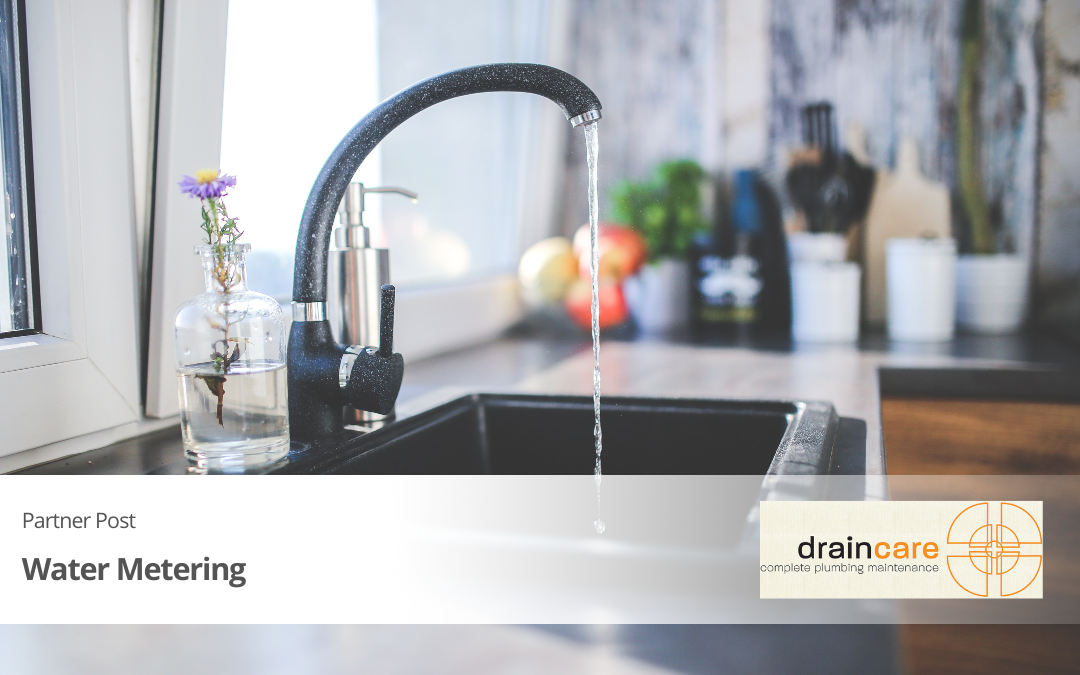With the cost of living rising, daily water consumption is no exception. This month, Draincare outline some of the key differences between individual and shared water metering.
In case you’ve been living under a rock, the cost of nearly everything has been going up. From fuel to electricity, used cars to lettuce, our living expenses are spiralling. Whilst this article is won’t save you on these household expenses, keeping your water bill under control can be something that is worth a shot.
In a normal domestic, single dwelling situation, the entire water bill comprises of your total consumption for the household. Obviously, if you have 2 people living there, don’t have a garden (or kids), and don’t wash your car or anything for that matter, the bill should be marginal. A big family, 2 or 3 bathrooms, laundry, garden, 5 cars and a swimming pool will always see the water usage at epic proportions.
Remember the drought? The awareness campaigns that stressed that “every drop counts” ? Hopefully that mentality has stayed with most of us since the time that the dams dried up and it didn’t rain for over 2 years.
But now that the weather has seen this situation change, did water become cheaper? Of course not. The utilities suppliers are still making sure this life-giving miracle liquid that comes out of a tap is another expense to charge the tax-paying public.
In the case of multi-dwelling, apartment, townhouse or large complex living, this expense still applies, but can be distributed unfairly. Most modern-day layouts have seen each dwelling receive their own individual water supply, which is read by the Utility (in most cases) and billed accordingly. Older buildings will see the main meter read, and then the water bill split into the number of dwellings within. In the case of some complexes, there is a Body Corporate element, where communal taps are used, and this consumption is subtracted from the sum of the individual dwelling meters and the last main meter reading. Being vigilant with an eye for dripping taps, running toilets, or water seen running out of a drain continually should be identified, reported and repaired swiftly. Observing the main water meter by using the “time lapse” function on your Iphone during off peak periods will also determine if there’s something going on, Otherwise, the committee might get a nasty “Dear Body Corporate” letter.
This can be downright unfair. Why should the little old lady, who has lived in her six-pack unit all her life, scrimps and saves on water, be lumped with a massive bill each quarter when the 3 other rental tenants have 4 or 5 people using the toilet, shower and kitchen all day? If the original hydraulic layout saw no immediate foresight into providing seperate water supply pipework, that water bill is forever being split unevenly.
One of the most common requests for quoting is to install individual water metering to these places. The first observation is determine how and where the water supply runs to each dwelling. If it’s a multi-storey layout with one larger pipe seen running upstairs from a garage to supply more than one unit, then this is almost impossible to split. Especially if you have the stop cock for the unit located inside. This would require extensive pipework run back downstairs and outside to a common area for meters to be installed and more importantly, read by the utility.
Some complexes have been plumbed and supplied with a water meter for each dwelling, but an older, non-compliant type that the Utility has deemed to be “unreadable” . This could mean that the meter is installed too deep, or too old, and not easily serviceable. Another snag is that they have been installed in a courtyard, that is deemed private, and might be locked. Ideally, the meters should be installed in a common area, numbered accordingly and be approved by the utility supplier.
The plumbing industry has now provided a complete meter box assembly for in-ground applications, as well as external, surface-mounted meters that can be mounted vertically. These are specifically designed and approved by most councils, and allow future individual water usage for each dwelling.
Whilst the cost for the plumbing works will vary, depending on the existing hydraulic layout for each application, the future savings for each resident will eventually pay for the initial outlay, making water bills fair and relevant again. If you require more information about your complex and it’s water billing situation, it’s worth the email.
Contact your Strata Manager today to find out more
